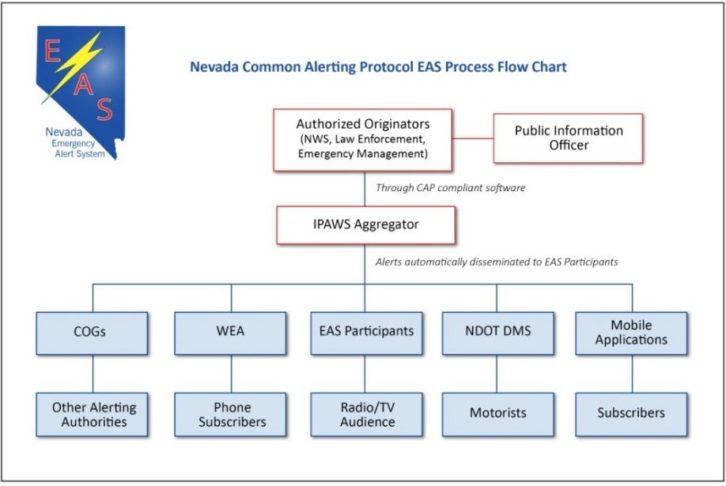How are State Emergency Communications Committees faring as the FCC deadline to file EAS plans approaches?
We’re asking SECC chairs. Below we share replies from Adrienne Abbott, state chair of the Nevada SECC.
The commission’s EAS rulemaking last year required creation of SECCs where they didn’t already exist and the filing of state plans via the Alert Reporting Service. ARS is an online system adopted four years ago to modernize state plan submissions and provide uniformity in terms of format and terminology, while affording flexibility to accommodate the needs of SECCs.
Plans are due July 5; the FCC also is requiring compliance with new plan content rules and EAS designations.
Radio World: Was the state’s SECC active prior to the FCC’s recent rule update, or did it relaunch as a result of the new rule?
Adrienne Abbott: The Nevada SECC has been active since 1995 and consists of representatives from radio and TV stations, cable television providers, the Nevada Broadcasters Association, the National Weather Service, the Nevada Division of Emergency Management and several county emergency managers.
RW: Who administers the committee and will be responsible for making sure it meets regularly?
Abbott: In our case, the state chair leads the committee and schedules annual meetings.
RW: Have you made any major updates or changes to your state EAS plan? What are the benefits?
Abbott: The Nevada EAS plan was updated in 2021. The update includes improved instructions for engineers and station managers to set up and program their EAS equipment as well as information on how to maintain proper documentation of EAS activities.
The update also included specific information on who is authorized to issue EAS activations and instructions for how those Authorized Alert Originators issue EAS activations.
RW: Do you have thoughts about how other states might improve EAS?
Abbott: I think the best resource for an EAS committee is an active state broadcast association that supports the SECC. A strong SBA can also provide the political leverage that an SECC might need to get state and local officials involved in the SECC and the proper understanding and use of EAS.
Thanks to Common Alerting Protocol, EAS can be untouched by human hands. State officials only need to fill out forms for the FEMA IPAWS office to set up their CAP program and can begin using it without contacting broadcasters or other EAS Participants. A state broadcast association can be the one group that bridges the gap between state government and broadcasters.

[See Our Business and Law Page]
RW: Do you have recommendations for improvements to the national system?
Abbott: It’s important for broadcasters and FEMA to understand that the FCC sees the national EAS system as a “last-ditch” communications system to be used in the event of a disaster that might destroy conventional communications systems, including the internet. Almost everything the FCC does with EAS revolves around that “doomsday scenario.”
There’s very little acknowledgement at the national level that EAS gets used every day at the state and local levels, mainly by the National Weather Service but also by state and local agencies — for everything from abducted, endangered children to wildfires and hazmat threats.
That means it’s up to the state and local committees to make sure that EAS works at the state and local levels. And if it works at the state and local levels, it will work at the national level if there’s ever a national emergency.
RW: What else would engineers or managers find interesting about your plan or alerting infrastructure?
Abbott: The one thing I hear from engineers and station managers is that they appreciate receiving weekly communications from the state chair. When I began working as EAS chair, I built a list of the radio and TV stations and large cable operators in the state, with all their contact information. I built email lists from that information and every week I send out a report to the EAS participants in each of the three operational areas on the tests and activations which have been issued the previous week. This report is designed to help EAS participants maintain accurate EAS documentation and to update EAS participants on any changes or developments at the national, state, or local level.
When Nevada added a CAP program, I added the authorized alerting agencies to the list, and it has helped them understand that EAS and even WEA have an impact on broadcasters and cable providers.
And when one of our agencies couldn’t send their routine weekly test, they emailed me notification. That’s how we discovered that our CAP provider had suffered a major outage. We were able to arrange for a backup provider until our regular service was restored. Thankfully, there were no emergencies during that time, but it was valuable to know that we had an alternative CAP provider if we needed it.









